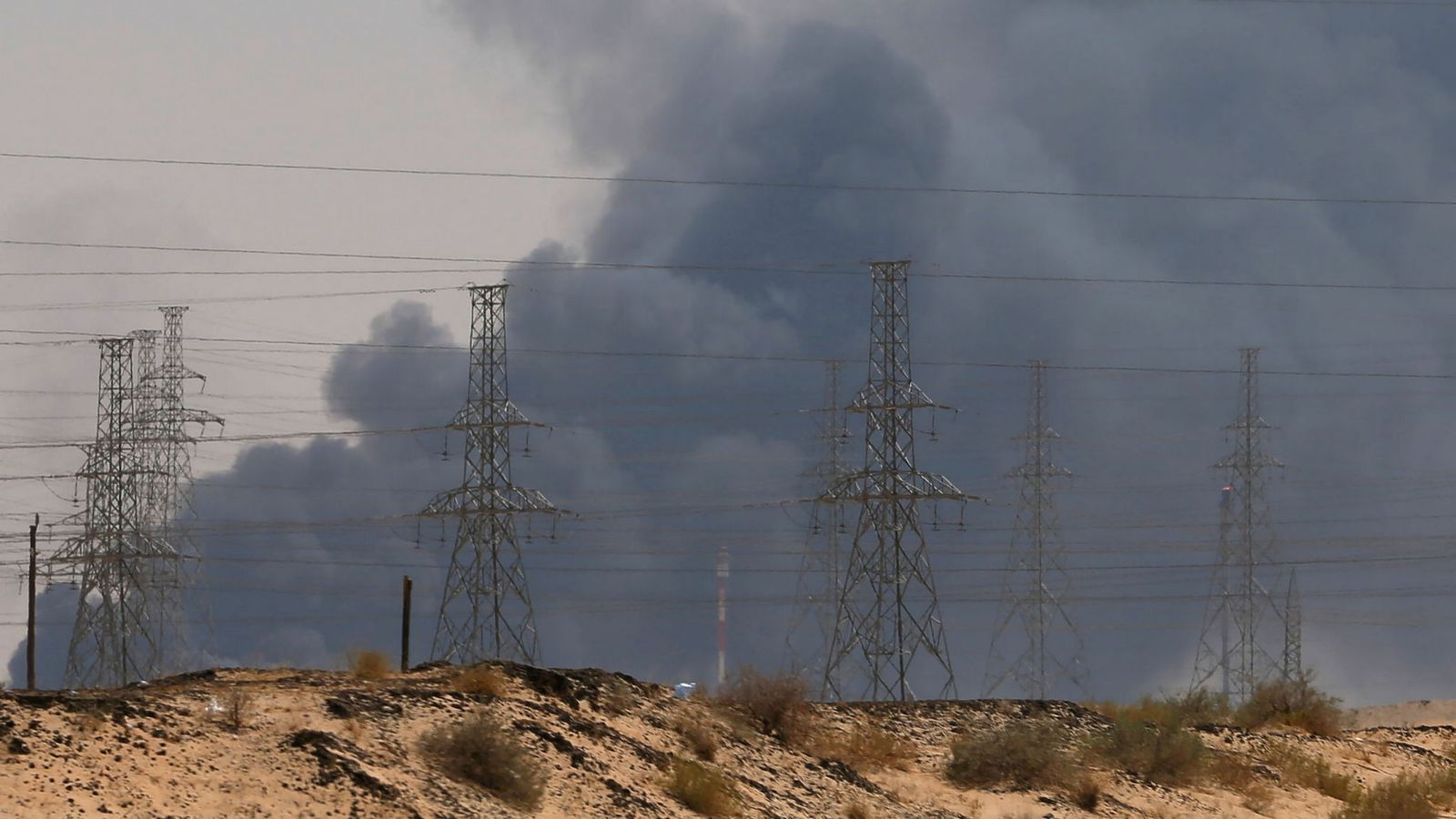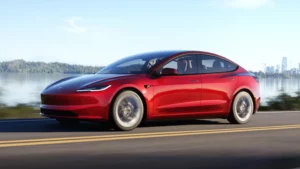The energy sector is notorious for booms and busts, but oil and gas stocks’ weighting in the S&P 500 has not been this low since as far back as 1979.
Investors have lost faith in oil companies, but it is not yet clear whether that is a permanent change caused by fear of increasing advances made by renewable-energy sources like wind, solar and electric batteries, or a temporary reluctance to invest caused by low oil prices.
Is the oil barrel half empty or half full?
In the past week you had your pick of answers to choose from, and they were bookended nicely from the week’s beginning to its end.

The missile and drone attack on the largest Saudi Arabian oil-refining operation, which resulted in the largest single-day gain for crude oil ever on Monday, reminded a world that had gone a long time without a geopolitical shock how central the role of oil remains.
By Thursday, though, Amazon CEO Jeff Bezos — a man whose every latest decision is equated with doom for whoever is on the other side of the competition — announced his company would reach a goal of carbon neutrality by 2040, a decade ahead of the Paris Agreement goal. Bezos said 10,000 electric-delivery vehicles will be on the roads in just three years (2022) and 80% of Amazon will be operating on renewable energy by as early as 2024. By 2030 all of Amazon and 100,000 delivery trucks will be 100% powered by renewable energy. On the same day, Google announced it was investing $2 billion in new renewable-energy projects, a record corporate purchase.
One day later millions around the world took to the streets — including Amazon and Google employees — in a climate strike ahead of UN Climate Week. “The plain truth is that capitalism needs to evolve if humanity is going to survive,” Patagonia CEO Rose Marcario wrote on LinkedIn.
You could add the fact that Duke Energy — the largest utility in the U.S., which for years had resisted renewables — announced this week that it would reach an interim target of 50% carbon emission reductions by 2030, 100% by 2050. Or that Daimler, credited with inventing the modern gasoline engine, announced it will cease all research and development related to internal combustion in favor of electrification.
And that was just one week.
But none of this week’s events mean as much to the energy market as two recent milestones in the S&P 500. These stock market technicals did not make as much noise but speak volumes about crude oil.
Exxon Mobil dropped out of the S&P 500‘s top 10 stocks for the first time in nine decades, and the energy sector weighting in the S&P 500 hit a low of roughly 4%. Yes, oil and gas is a boom-and-bust sector and its valuation can be volatile, but the sector has not had a weighting this low based on S&P 500 data in four decades.
That poses a question that no one can answer with conviction, but it won’t be going away: Are we beginning to see signs of the end of Big Oil as an investment stalwart, regardless of what’s still sitting in the underground reserves around the world?
Losing confidence?
Sam Margolin, managing director and senior analyst at Wolfe Research covering energy sector stocks, said with some investors the oil industry has become its own hurdle, and the general fear about where the world is heading supersedes the need to be certain about a peak oil timeline.
“To the extent anyone says, ‘I can’t look at the sector because I have no long-term confidence in oil as an energy source,’
what is interesting about those comments is that the time frame is not relevant. Someone will say,
‘Oil will be used in 10 years but I don’t know about 20 or 50.’ It is just at some point in the future it will be out of the mix,
And that’s a hurdle to overcome, and there are investors like that. It’s not universal, and there are just as many people on the other side who say the next shortage will come sooner than anyone expects.”
One way to discount any correlation between the sector’s S&P 500 decline and general investor souring on energy is to focus on how big the technology industry has become. As the weighting of the biggest U.S. tech companies have grown and consumed more of the total market return, other weightings decline.
Over the past five-year period, 30% of the S&P 500 return was generated by the five biggest technology stocks — Alphabet, Facebook, Apple, Microsoft and Amazon.
“The rest of the market has been getting bigger and leaving energy companies behind,” Margolin said. “The market cap of Exxon Mobil is not lower than it was 20 years ago. It is just that the rest of the market has tripled.”
“This is not the first time oil prices have been in the $50–$60 range, and yet the energy weighting is significantly less than it had been in the past,” said Stewart Glickman, energy analyst at CFRA. When oil was trading between $50 and $60 during 2005 and 2006, the world was a different place. “Now alternative energy is a threat. It is still not a threat that renewables in a really significant way are taking over for fossil fuels,” he said, noting that the intermittent generation of solar and wind and scaling of energy-storage solutions remain challenges. “But people are worried,” Glickman said. “They’ve lost the growth investors even if they still have dividend investors.”
“Investors are worried that oil demand will peak and the sector is not ready for it. Same as in European electricity, coal, autos and GE. The fear is that this is not just another cycle but a structural shift,” said Kingsmill Bond, CFA and energy strategist at Carbon Tracker, a nonprofit that researches the impact of climate change on the financial markets. “The oil sector is just another example of an incumbency disrupted by superior technology. Markets have seen this many times and it does not play out well for the incumbents.”
After the attack on the Saudi oil infrastructure crude ended the week up near-6%; the energy stock sector within the S&P 500 was up 0.99%, according to CNBC data.
Not just oil – Natural gas under attack by wind and solar
The next market where the disruptive potential is highest may be natural-gas fired power generation. If the past decade was about natural gas displacing coal in the utility sector, the next decade will be a competition between natural gas and renewables including wind and solar, say analysts.
“We are just now shifting our focus to the competition between natural gas and renewable energy,” said Travis Miller, utilities analyst at Morningstar. “Renewables were the sideshow as natural gas competed with coal, but we see natural gas and renewables increasingly competing with each other. Increasingly, there are a number of cases where it is more advantageous for customers and utilities to invest in solar and wind versus natural gas. Rewind to a decade ago and all the utilities were talking about natural gas.”
Exxon Mobil and its oil peers are heavily invested in natural gas projects around the world. While that means big bets on the liquified natural gas market won’t be influenced by a faster shift in U.S. power generation, the cost equation is going to change globally.
“The concern is going straight from coal to renewables,” Margolin said. “It looks unlikely because of the scale of renewable investment required, but we are going into a period of time when we know eventually the world will be off oil; we don’t know if the same can be said of natural gas.”
Royal Dutch Shell is the biggest global player in the liquified natural gas market and it expects gas demand to double by 2035 from current levels, which would imply a big supply shortfall and much more investment needed to meet that demand. “The vast majority is for power generation,” said energy research firm Wood Mackenzie analyst Luke Parker.
A recent report from the Rocky Mountain Institute argues that the investments being made today in gas-fired power plants and pipelines will quickly become a money loser. Utilities and investors have announced plans for over $70 billion in new gas-fired power plant construction through 2025, but its research suggests that 90% of the proposed capacity is more costly than equivalent clean energy portfolio options for utilities.
Battery storage costs — key to making intermittent sources of power like solar more reliable as a primary part of the grid — are also expected to fall drastically. From 2010-2018 lithium-ion battery costs declined by 85% and they are forecast to decline by another 50% by 2030, according to Bloomberg New Energy Finance, with major implications for the utility and electric vehicle market.
Announcements like Amazon’s purchase of 100,000 electric delivery vans are good for every player in the battery market, said former Ford CEO Mark Fields on CNBC, as the increase in battery production will drive down pricing more broadly.
Before Duke Energy’s commitment this week there was Xcel Energy in Minnesota, the first U.S. utility to say it was on the path to 100% renewable power generation. It had been one of the heaviest coal generators in the U.S., but also sits in a geographic footprint which maps with high wind potential, Miller said. “They have completely transitioned from coal to natural gas and now, in last two years, to an entire focus on renewables.”
A critical part of this shift for utility companies is getting all the stakeholders on board, he said, and the Xcel example shows that is happening, with regulatory support and customer support to invest substantially in renewables.
“We think solar will be the story of next decade,” Miller said. “The big winners will be investing heavily in renewables now. Companies that come to the table in a decade are going to be losers. They will be stuck with stranded assets.”
Natural gas will continue to be a huge part of the U.S. grid, up from one-third of generation not to as much as 40% in the next five years, but Miller said “it is looking more like bridge fuel rather than the primary fuel we thought it would be a decade ago. Everyone foresaw challenges coal faced. I don’t think people saw the speed at which renewables would become such a primary source of investment in the generation business.”
Big Oil’s energy transformation?
The oil and gas management teams at companies like BP and Shell are talking a lot more about energy transformation. A recent analysis of presentations and investor calls done by Wood Mackenzie’s Parker found an “exponential increase” in use of terms like “energy transition.”
“Energy transition terminology has gone from zero or near to zero five years ago to one of dominant themes of messaging to investors, and that speaks volumes about how investors have moved, and how companies are having to move themselves,” Parker said. But he added “actions speak louder than words” and the low-carbon investments relative to the traditional oil and gas investments on the balance sheet of these companies are “still a fraction.”
Shell is planning to spend $2 billion to $3 billion annually on renewable energy out of a total budget of $30 billion per year through 2025. On average, oil and gas companies are spending 1% of their budget on renewables.
There’s a simple reason why: they still make a lot more money from fossil-fuel extraction, including in the U.S. shale plays.
“There is no renewable investment that will compete with returns from the Permian Basin,” Parker said.
“With major oil and gas cos like Exxon and Chevron, the reason they keep reinvesting in oil and gas at this rate over renewables is not a philosophical thing,” said Margolin. “They invest because this is where they see the financial case and if ever there is a clear signal the return profile was better in renewables, they would go there.” He added, “The difference between them and a Kodak or a coal company is that they have much better resources, and $40 billion in cash flow annually with which they can pivot between projects. … I see where are people tempted to make the analogy to other disrupted industries, but these others don’t have the financial might of Exxon.”
Shell’s investment will be a good test case of whether the oil and gas majors can generate comparable returns on investment from renewables. “Stable cash flows of offshore wind may be exactly what investors looking for in a super major to mitigate the type of risk we saw last weekend,” Parker said.
A record-setting auction for offshore wind power projects in the U.K. this past week priced them at lower rates than current coal and natural gas generation prices in the U.K.
“Shell has the scope to make competitive returns in this area and they would not be investing if they did not think so, but at the same time, clearly the amount they are talking about energy transition and renewables versus the actual focus of the here and now is disproportionate,” Parker said.
The $2 to $3 billion Shell plans to spend on renewable investments per year compares to $125 billion in dividends and share buybacks Shell plans to deliver to investors between 2021 and 2025.
That’s not a surprise: analysts say as the commodity case for energy stocks has failed to compel investors, the oil and gas companies need to find other ways to attract their money. On its last earnings call with analysts, Exxon Mobil conceded under questioning that it had been holding meetings with investors asking about their interest in a buyback of its shares.
Peak Oil
Calling peak oil has been a fool’s errand for over a century. When the first U.S. oil bonanza began in Titusville, Pennsylvania, in the late 1850s many in the press were confident that it would be the beginning, and the end, of the U.S. oil boom.
But the conversation has changed.
“Peak oil used to be a conversation about supply running out, but now it is about demand peaking,”
Parker said.
“In the future, exploration is largely redundant — at least for the purposes of adding resource — even in a modest demand growth scenario,” Wood Mackenzie analysts wrote in a recent report. “The world does not have a supply problem. The world is awash with oil and the Majors know it.”
The report went on: “The fundamental question is this: will industry forecasts for sustained oil demand growth ‘prevail’ over scientific warnings of the consequences of that growth? At this point, we simply cannot know. But one thing is for certain — neither companies nor investors can afford to bet the farm on either outcome.”
Carbon Tracker’s Bond sees in the planned Saudi Aramco IPO, whose timing has been thrown into question by last week’s attack, the ultimate tell that Peak Oil is here. “The largest oil IPO in history. At a time when there are fears of peak oil demand,” he said. “I don’t think I need to elaborate.”
Though, roughly 160 years after Titusville, if anyone can stretch out the oil era to its most-delayed possible end, it is Saudi Arabia.
“The Saudis, along with the Russian and U.S. are the lowest-cost barrels in the world and they will still be producing. Canadian oil sands or frontier deepwater, or U.K. North Sea where there are high operating costs, go first.
That’s where barrels first stay in the ground,”
Parker said.
And that already has started to happen. Exxon Mobil and other major oil companies including ConocoPhillips have had to write down existing reserves in Canadian tar sands, which the companies say is done for regulatory accounting purposes and can be reversed if prices rise, but others argue the debooking of assets should be viewed as a long-term read-through on demand.
An August report from BNP Paribas forecasts that oil will have to go as law as $10 to be competitive with renewables in the electric car era. While the U.S. oil boom in the shale is such a recent phenomenon that analysts still struggle to understand exactly how much money these companies can make in various price scenarios, and have trouble placing too much faith in cost estimates offered by management, Saudi drilling is the lowest-cost in the world.
That makes Parker certain of at least one thing when it comes to Saudi Arabia and arguments over peak oil demand. “They will be going to the end.”
Reporting thank to CNBC and others.





